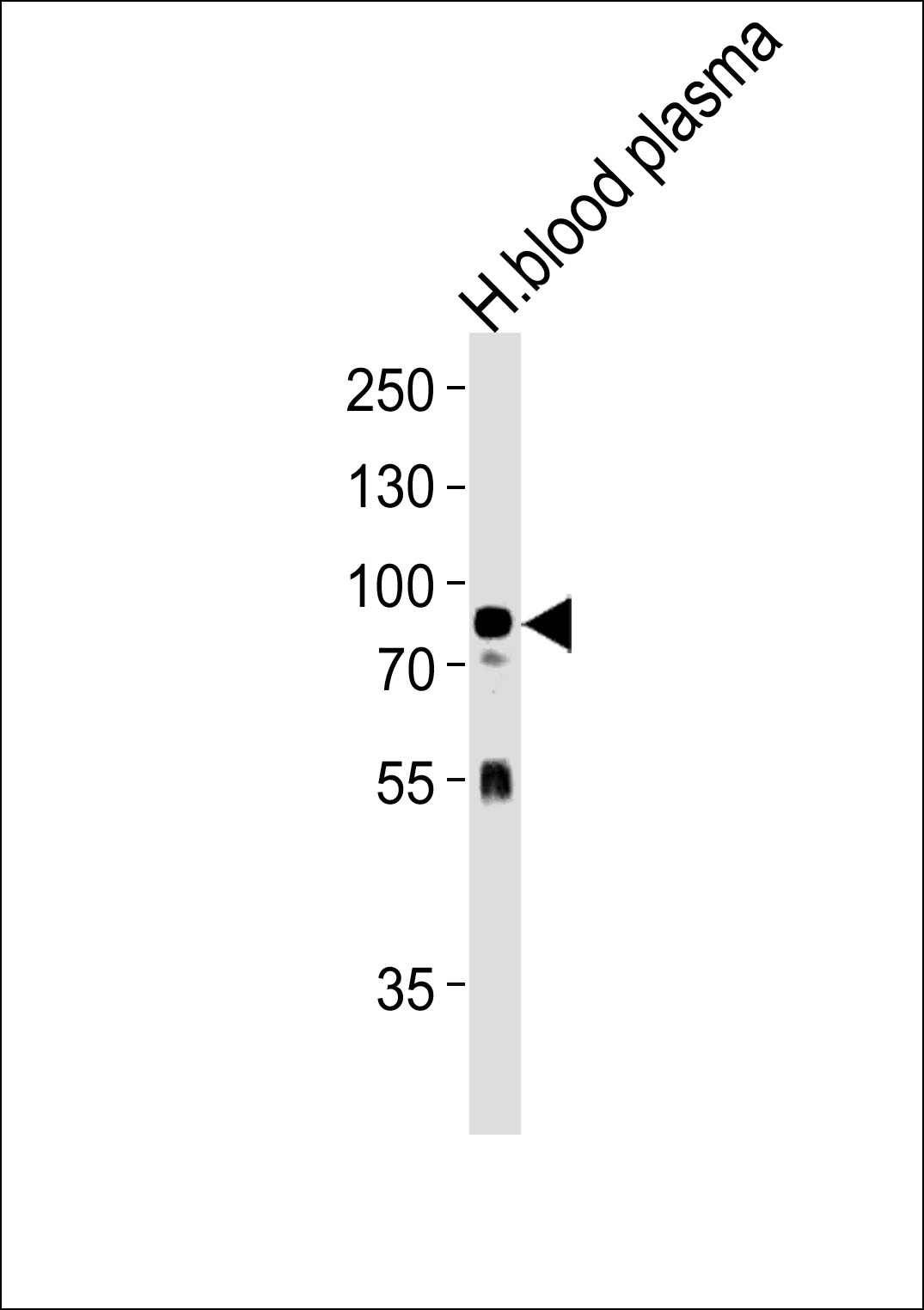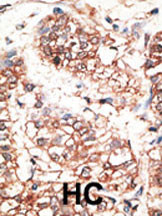NRG3 Antibody (Center)
Purified Rabbit Polyclonal Antibody (Pab)
- 产品详情
- 文献引用 : 2
- 实验流程
- 背景知识
Application
| IHC-P, WB, E |
|---|---|
| Primary Accession | P56975 |
| Other Accession | O35181 |
| Reactivity | Human, Mouse |
| Predicted | Mouse |
| Host | Rabbit |
| Clonality | Polyclonal |
| Isotype | Rabbit IgG |
| Calculated MW | 77901 Da |
| Antigen Region | 305-336 aa |
| Gene ID | 10718 |
|---|---|
| Other Names | Pro-neuregulin-3, membrane-bound isoform, Pro-NRG3, Neuregulin-3, NRG-3, NRG3 |
| Target/Specificity | This NRG3 antibody is generated from rabbits immunized with a KLH conjugated synthetic peptide between 305-336 amino acids from the Central region of human NRG3. |
| Dilution | IHC-P~~1:100~500 WB~~1:1000 E~~Use at an assay dependent concentration. |
| Format | Purified polyclonal antibody supplied in PBS with 0.09% (W/V) sodium azide. This antibody is prepared by Saturated Ammonium Sulfate (SAS) precipitation followed by dialysis against PBS. |
| Storage | Maintain refrigerated at 2-8°C for up to 2 weeks. For long term storage store at -20°C in small aliquots to prevent freeze-thaw cycles. |
| Precautions | NRG3 Antibody (Center) is for research use only and not for use in diagnostic or therapeutic procedures. |
| Name | NRG3 |
|---|---|
| Function | Direct ligand for the ERBB4 tyrosine kinase receptor. Binding results in ligand-stimulated tyrosine phosphorylation and activation of the receptor. Does not bind to the EGF receptor, ERBB2 or ERBB3 receptors. May be a survival factor for oligodendrocytes. |
| Cellular Location | [Pro-neuregulin-3, membrane-bound isoform]: Cell membrane; Single-pass type I membrane protein. Note=Does not seem to be active. [Isoform 3]: Cell membrane; Single-pass type I membrane protein. Note=Isoform 3 is also proteolytically released as a soluble form |
| Tissue Location | Highly expressed in most regions of the brain with the exception of corpus callosum. Expressed at lower level in testis Not detected in heart, placenta, lung, liver, skeletal muscle, kidney, pancreas, spleen, thymus, prostate, ovary, small intestine, colon and peripheral blood leukocytes |
For Research Use Only. Not For Use In Diagnostic Procedures.

Provided below are standard protocols that you may find useful for product applications.
BACKGROUND
NRG3, which belongs to the neuregulin family, is a direct ligand for the ERBB4 tyrosine kinase receptor. Binding results in ligand-stimulated tyrosine phosphorylation and activation of the receptor. NRG3 does not bind to the EGF receptor, ERBB2 or ERBB3 receptors. The protein exists as an type I membrane protein and as a proteolytically released soluble growth factor form. The membrane-bound form does not appear to be active. NRG3 is highly expressed in most regions of the brain with the exception of corpus callosum, and is expressed at lower level in testis. It is not detected in heart, placenta, lung, liver, skeletal muscle, kidney, pancreas, spleen, thymus, prostate, ovary, small intestine, colon and peripheral blood leukocytes. The NRG3 cytoplasmic domain may be involved in the regulation of trafficking and proteolytic processing. Regulation of the proteolytic processing may involve initial intracellular domain dimerization.
REFERENCES
Zhang, D., et al., Proc. Natl. Acad. Sci. U.S.A. 94(18):9562-9567 (1997).
终于等到您。ABCEPTA(百远生物)抗体产品。
点击下方“我要评价 ”按钮提交您的反馈信息,您的反馈和评价是我们最宝贵的财富之一,
我们将在1-3个工作日内处理您的反馈信息。
如有疑问,联系:0512-88856768 tech-china@abcepta.com.






















 癌症的基本特征包括细胞增殖、血管生成、迁移、凋亡逃避机制和细胞永生等。找到癌症发生过程中这些通路的关键标记物和对应的抗体用于检测至关重要。
癌症的基本特征包括细胞增殖、血管生成、迁移、凋亡逃避机制和细胞永生等。找到癌症发生过程中这些通路的关键标记物和对应的抗体用于检测至关重要。 为您推荐一个泛素化位点预测神器——泛素化分析工具,可以为您的蛋白的泛素化位点作出预测和评分。
为您推荐一个泛素化位点预测神器——泛素化分析工具,可以为您的蛋白的泛素化位点作出预测和评分。 细胞自噬受体图形绘图工具为你的蛋白的细胞受体结合位点作出预测和评分,识别结合到自噬通路中的蛋白是非常重要的,便于让我们理解自噬在正常生理、病理过程中的作用,如发育、细胞分化、神经退化性疾病、压力条件下、感染和癌症。
细胞自噬受体图形绘图工具为你的蛋白的细胞受体结合位点作出预测和评分,识别结合到自噬通路中的蛋白是非常重要的,便于让我们理解自噬在正常生理、病理过程中的作用,如发育、细胞分化、神经退化性疾病、压力条件下、感染和癌症。







